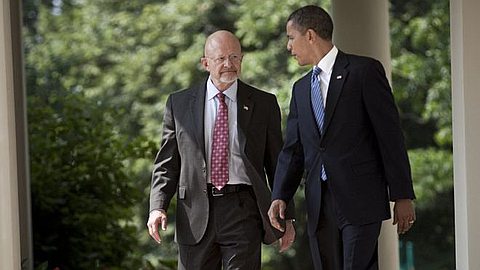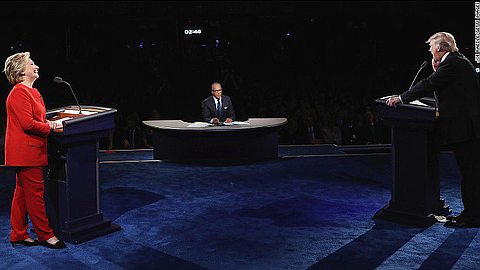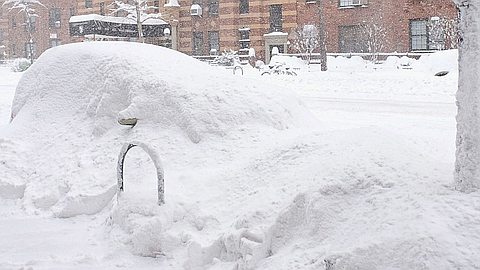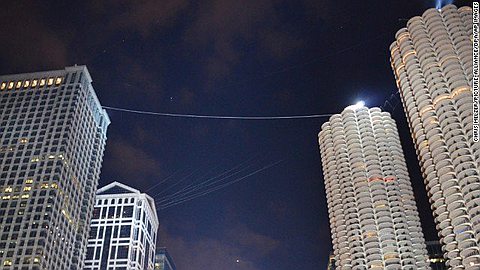Amazon opens a supermarket with no checkouts
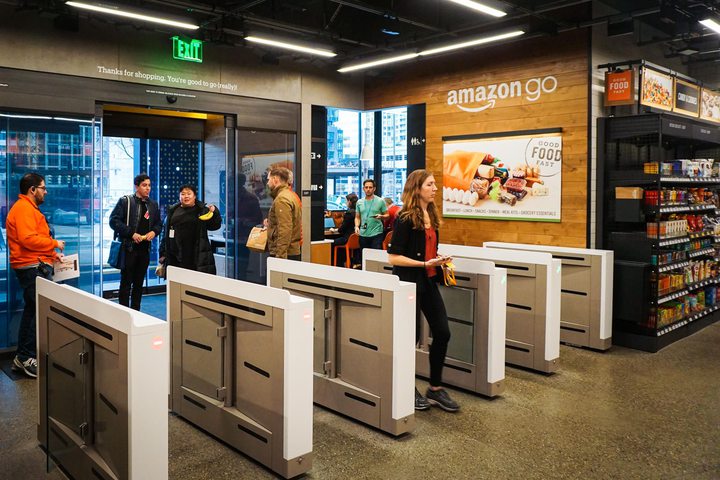
Amazon Go, in Seattle, has been tested by staff for the past year.
It uses hundreds of ceiling-mounted cameras and electronic sensors to identify each customer and track what items they select.
Purchases are billed to customers' credit cards when they leave the store.
On entering the store, shoppers walk through gates similar to those in the London underground, swiping their smartphones loaded with the Amazon Go app.
Then they are free to put any of the sandwiches, salads, drinks and biscuits on the shelves straight into their own shopping bags.
There's no need for a trolley or basket, since you won't be unpacking it again at the till. In fact, unless you need to be ID-checked for an alcohol purchase, there's also no need for any human interaction at all.
With the help of sensors on the shelves, items are added to customers' Amazon Go account as they pick them up - and delete any they put back. And an electronic receipt is issued as they exit.
The store opened to employees of the online retail giant in December 2016 and had been expected to allow the public in more quickly.
But there were some teething problems with correctly identifying shoppers of similar body types - and children moving items to the wrong places on shelves, according to an Amazon insider.
Amazon has not said if it will be opening more Go stores, which are separate from the Whole Foods chain that it bought last year for $13.7bn (£10.7bn).
As yet the company has no plans to introduce the technology to the hundreds of Whole Foods stores.
However, retailers know that the faster customers can make their purchases, the more likely they are to return.
Making the dreaded supermarket queue a thing of the past will give any retailer a huge advantage over its competitors.
The Seattle store is not Amazon's first foray into bricks and mortar retailing. In 2015 the firm opened its first physical bookshop, also in Seattle where the company is based. There are now 13 in the US - as well as dozens of temporary pop-up outlets.
How does it work?
Grab-and-go shopping has been the "future of retail" for some time now.
But now Amazon believes its time has come - or at least that it is ready for real-world testing.
They're calling it "Just walk out" and while they won't spill the beans on just how it works, they say it uses "computer vision, deep learning algorithms and sensor fusion, much like you'd find in a self-driving car".
You scan a QR code as you enter. After that, your phone can go back in your pocket.
Hundreds of infra-red ceiling cameras have been trained (with Amazon employees as guinea pigs) over the last year to differentiate between customers as they move around the store, and between items for sale, even those with similar appearances, such as different flavours of the same canned drink.
There are weight sensors on the shelves to help indicate if an item has been taken or put back. And some items carry a visual dot code, like a bar code, to help cameras identify them.
Amazon isn't offering any information on how accurate the system is.
One thing we do know: they're on to the less-than-honest. A New York Times journalist had a go at shoplifting some cans of soft drink, but the system spotted it and put them on his bill.

